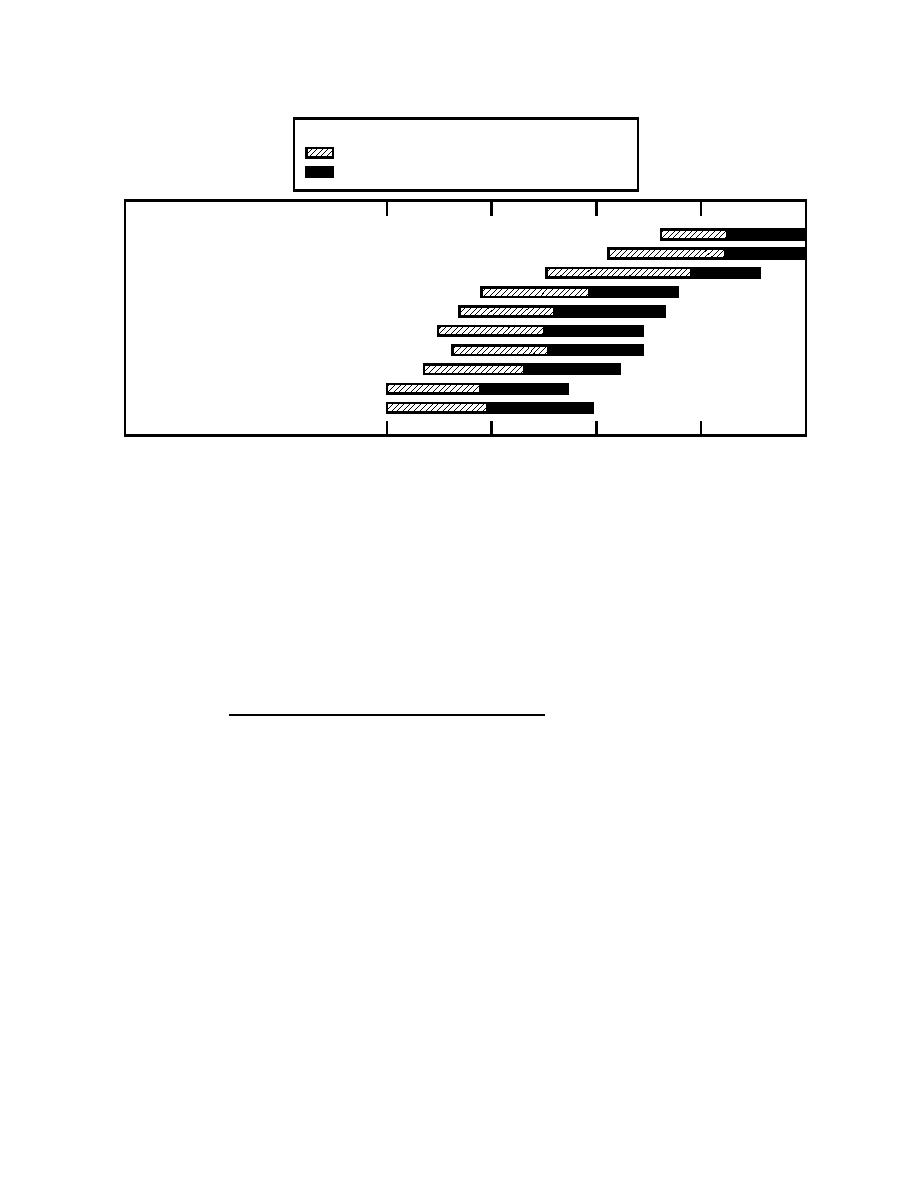 |
|||
|
Page Title:
The Development of Tritium Technology |
|
||
| ||||||||||
|
|  DOE-HDBK-1132-99
Damage
Utility of Plastic
Mild to moderate
Often satisfactory
Moderate to severe
Limited use
Alkyl aromatics
Ethers
Mineral oils
Esters
Polyglycols
Silicons
Silicates
Phosphates
Chlorofluorocarbons
Fluorinated compounds
106
107
108
109
1010
Gamma Exposure, Rads (C)
FIGURE 6. Relative radiation resistance of base oils.
pattern slowly changes from one of a reverse surface contamination model to
one of a reverse outgassing model (i.e., the level of outgassing from any given
surface can be expected to increase until it too reaches a steady-state,
equilibrium level with its own local environment).
The Development of Tritium Technology. In the preceding sections, we have
2.10.7
taken a look at the basic physical and chemical properties of tritium that
designers have to contend with but have little or no control over. In reality,
these are the things that designers must accommodate. The sections that
follow describe the design and operational philosophies that have evolved over
the years.
During the first two decades of the development of tritium technology,
operational techniques were designed primarily to protect the worker from
exposures to tritium. By the late 1950s, it had firmly been established that
exposures to tritium in the form of tritiated water vapor (i.e., T2O, or, more
correctly, HTO) could be as much as 25,000 times more hazardous than
I-109
|
|
Privacy Statement - Press Release - Copyright Information. - Contact Us |